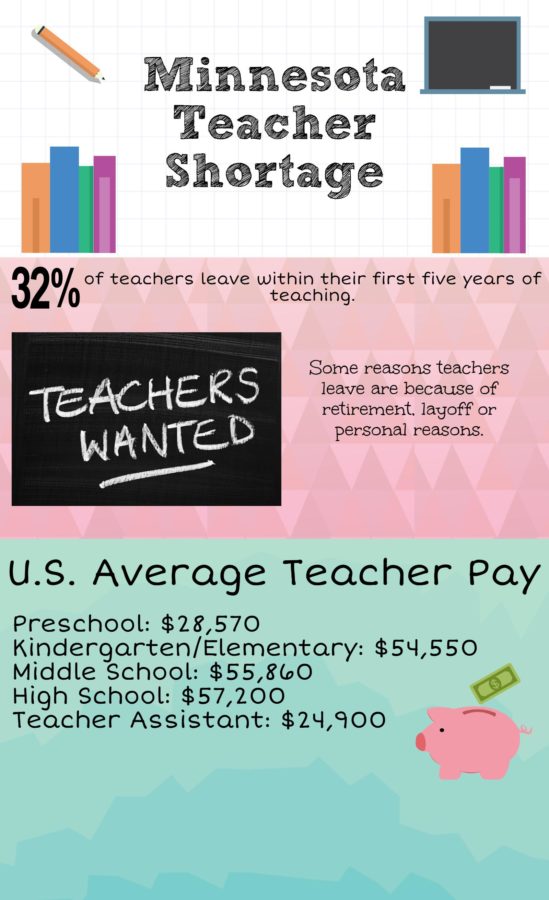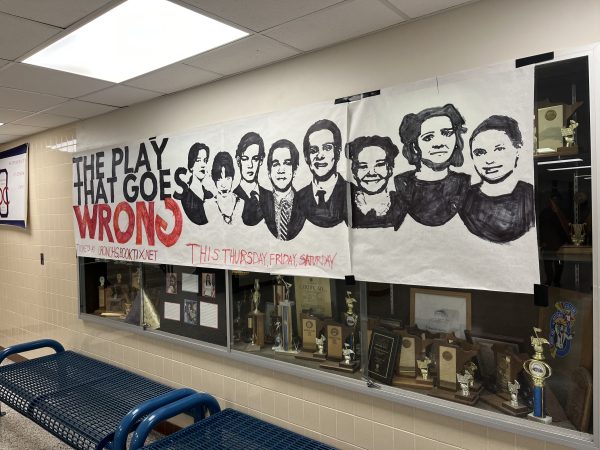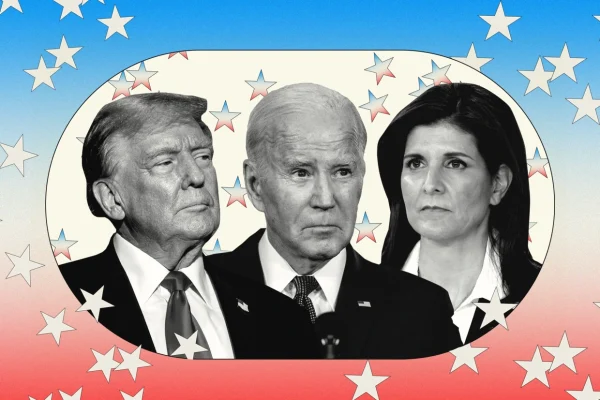Teacher Shortage Threatens Minnesota Schools
Currently, Minnesota is faced with a difficult obstacle: a shortage of teachers. Currently, according to Kare 11, more teachers are leaving the field than ones that are entering it, and this means that there are fewer teachers and a heightening demand.
“We’ve known for a while that shortages were coming in specialized fields,” media specialist Mary Bischoff said.
Kare 11 stated that because of the teacher shortages, districts have had to hire teachers that don’t have the full requirements in order to teach.
“I think that it’s really hard to understand the workload, the time and the energy that teaching takes,” English teacher Sarah Cole said.
Usually, in order to become a teacher one must obtain a Bachelor’s degree, or a four year degree. However, according to United States Bureau of Labor Statistics, some states require high school teachers to have a master’s degree, which is an additional two years.
“The respect for teachers has gone down significantly,” English teacher Jarrett Lundquist said.
Typically teachers don’t get the respect they deserve because some people think the job is “easy”. A statistic from The Washington Post states that 75 percent of teachers spend two hours either before or after school grading work.
The Twin Cities Pioneer Press states that the qualifications for becoming a teacher in Minnesota are very high in order to get a teaching license. There are many teachers who become licensed in Minnesota, however the licenses only last a couple years and are temporary.
The midwest considers Minnesota licensing process to be the “golden path”. However 32 percent of teachers leave within their first five years, as stated in the Pioneer Press.
“We don’t want just anybody to become a teacher, just like you don’t want anyone to become a doctor or a lawyer,” social studies teacher Jeff Aman said.
At OHS we have 53 teachers, not including paraprofessionals, librarians or substitute teachers. That means that if 32 percent left after their first five years, 17 teachers would be gone.
“I feel like towards the end of the year everyone is ready for summer and things are building up for the end of the year,” junior Naomi Byrne said. “Teachers are trying to fit in everything for the students to learn, and this can be both stressful on the teachers and the students.”
There are, however, helpful incentives implemented to keep teachers teaching. Education Minnesota states that some of these include stress reduction, more financial support and investment in “high-quality professional development” for teachers.
There are many licenses that one can obtain for teaching. As stated by the Minnesota Department of Education, some of these include Limited Intern, Limited Full-Time License, Lifetime Short-Call Substitute and Full-Time Full Professional Minnesota Education License.
Overall, teachers have a harder job than people think, and the steps to becoming a teacher are equally as difficult.

Junior Sophia Rauchle is a self-described nice person, and that couldn’t be more true. She is quick to laugh, always ready to flash a smile, and a great...











